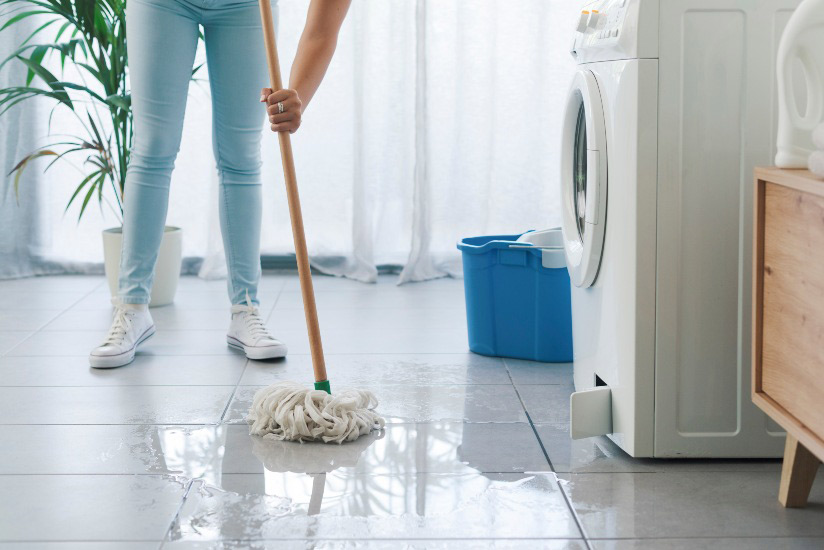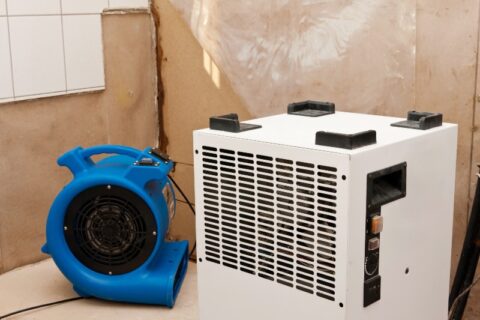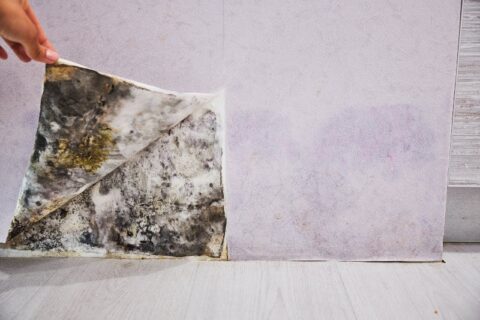What to Do if Your Washing Machine Floods

Ordinarily, you might not give your washing machine too much thought. If it floods, though, it’s hard not to notice! A washing machine flood can make an enormous mess because the typical load of laundry uses about 30 gallons of water. That’s a lot of water to be all over the floor of your laundry room. Don’t panic! We’ve got some tips for what to do if your washing machine floods.
First, clean up the mess as quickly as possible. A washing machine flood can begin to ruin walls, flooring, cabinets, and other fixtures within hours. Even if you think you’ve soaked up the laundry soap and water, if you don’t completely dry the area, lasting water damage can occur. To clean it up properly, you’ll need the right equipment and to follow these steps:
- Stop the water flow quickly. You’ll probably be able to do this by turning the valves behind the washer. In some cases, though, stopping the water requires turning off the water main to the house.
- Unplug the washing machine. You’ll need to stop the washer and avoid mixing water and electricity, but turning off the washing machine is a bad idea. Most of the time, turning off the washer will cause the machine to drain and lead to more flooding. Unplugging it is a safety measure and can also stop the wash machine flood from continuing.
- Clean up as much water as possible. Less than an inch of standing water can probably be cleaned using towels or a mop. If it’s deeper, pump the water outside and use towels to clean whatever remains. A wet-dry vacuum can help pull water out of walls and carpeting, but it should be used after most of the water has been removed. Once you’ve removed the standing water, rent high-volume drying fans and structural dehumidifiers to dry the house quickly, leaving less time for damage to occur and mold to grow.
- Get rid of damaged material and items. Assess the damage and throw away anything that can’t be salvaged. If the flooding was extensive, you may need to get rid of some furniture, or even walls, cabinets, and flooring. Replace any carpet or laminate flooring to prevent mold growth and replace drywall at least two inches above the water line.
- Empty the machine. Remove the clothes, carrying them outside where they can be rinsed with a hose and hung to dry in the sun. Remove water from the washing machine with a bucket or a wet-dry vac, dumping it outside.
- Disinfect and deodorize. While your washing machine water is unlikely to contain mold or bacteria, it’s wise to disinfect your home after any flood, using a bleach solution. Open the windows to air out odors.
- Make necessary repairs. Visible damages will be easy to assess, but there may be hidden damage. If the room smells musty after three days, there could be water damage in your flooring or sheetrock.
- Don’t hesitate to call in the experts. At any point in this process, you may become overwhelmed; cleaning up after a flood is labor-intensive, time-consuming work. What’s more, it may be beyond your skills to determine what’s wrong with the machine and repair the damage to your laundry room. Call in a washing machine repair specialist to fix the washer, and a flood restoration company to deal with the rest.
If your washing machine floods and you need help with the cleanup, call the experts at Pacific Flood Restoration. We offer full-service, 24-hour, on-call emergency services, and we’ve earned a reputation for being dependable, on time, courteous, and ethical. No matter the extent of your damage, our trained technicians have the experience, proven techniques, and state-of-the-art equipment to restore your home, fixing whatever damage it may have sustained. Call 832-294-5462, or contact us through our website.


